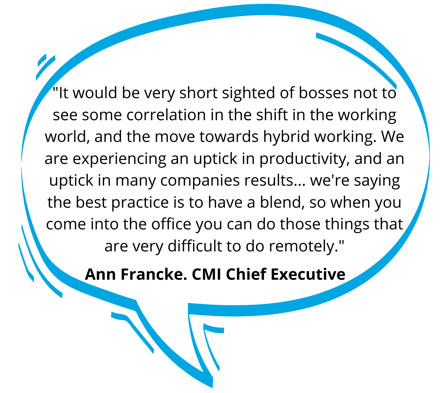Hybrid working or working from home for part of the week has become the norm for many workers over the past couple of years. A recent survey from the Chartered Management Institute (CMI) found that 80% of firms had adopted it in some form. Furthermore, the survey reports that disabled workers are 1.3 times more likely than non-disabled workers to be working from home and that, perhaps unsurprisingly, working remotely was more valuable for them as they could better manage their conditions. Obviously, as we have mentioned in a previous blog regarding the 4 day working week, not all types of flexibility complement all types of work. Factory work, much of retail, transport, and medical staff, for example, certainly won’t have much of an opportunity to work from home.
 There most certainly was a drive pre-2020 in many industries for smarter working (for instance, a major initiative by the civil service is seen in this still useful 2013 publication “The Way We Work – A Guide to Smart Working in Government”). Many organisations already had home working and other flexible work initiatives, but for many, the move to this new way of working has been prompted by the Covid pandemic and the “work from home” directive. Large companies more than small ones have brought in, and continued, these newer hybrid working practices.
There most certainly was a drive pre-2020 in many industries for smarter working (for instance, a major initiative by the civil service is seen in this still useful 2013 publication “The Way We Work – A Guide to Smart Working in Government”). Many organisations already had home working and other flexible work initiatives, but for many, the move to this new way of working has been prompted by the Covid pandemic and the “work from home” directive. Large companies more than small ones have brought in, and continued, these newer hybrid working practices.
Even with the Prime Minister saying, “be confident and get back to work”, as businesses try to move into a more normalised future, it is clear that much of this change to hybrid working is here to stay. And rightly so if you consider most surveys on productivity and quality of work life!